Occupational environment monitoring at the factory mining coal
99,000 ₫
Note: The above price is calculated for one sample. Prices may fluctuate depending on the area of the environment to be monitored and market conditions. For more accurate pricing support, please refer to the price list or contact our consulting staff directly.
Workplace environment monitoring for a coal mining production factory is a session of collecting, analyzing, and evaluating factors at the workplace that may be harmful to workers health.
Table of Contents
Toggle1. Overview of Coal Mining Factories
a. What is a coal mining factory?
A factory for coal mining is a production facility designed to extract, process, and handle coal. The coal mining process includes extracting coal from underground using methods such as tunneling, mining, or open-pit mining. After extraction, coal is transported to the factory for processing and handling.

b. Production stages in a coal mining factory
In a coal mining factory, the main production stages include:
- Pre-processing: Coal from the mine is transported to the factory and undergoes pre-processing to remove impurities. Pre-processing stages may include removing soil, rock, grass, trees, and other impurities using screening systems, washing machines, crushers, and other equipment.
- Mining and transportation: After pre-processing, coal is mined from the mine using tunneling, mining, or open-pit methods. Then, coal is transported from the mine to the factory via trucks, rail, or conveyor belts.
- Crushing and classification: Coal is fed into crushers to reduce it to smaller particle sizes. Then, it is classified by particle size through screening to separate the final coal product according to the desired size and purity.
- Treatment and compound separation: Treatment stages are performed to remove unwanted compounds from the coal. This includes removing impurities such as sulfur, heavy metals, and other pollutants. Treatment and separation methods may involve filtration, chemical treatment, or physical processing.
- Drying and dehumidification: Coal may be dried and dehumidified to remove water and reduce moisture. This process improves coal quality and increases combustion efficiency.
- Packaging and transportation: After processing, coal is packaged in suitable containers, such as jumbo bags or plastic bags, and prepared for transportation to usage sites or power plants.

c. Types of machinery used in coal mining factories
In coal mining factories, various machines and equipment are used to carry out coal extraction and processing stages. Below are some common machines found in coal mining factories:
- Crusher: Coal crushers are used to reduce coal to smaller particle sizes. Common types include cone crushers, jaw crushers, shaft crushers, roller crushers, and impact crushers.
- Screening machine: Screening machines classify coal by particle size. Common types include vibrating screens, rotary screens, and mesh screens.
- Conveyor belts: Conveyor systems are used to transport coal from the mine to the factory and between production stages. They can handle short or long distances and may include network conveyors, nuclear conveyors, and linked-belt conveyors.
- Coal washer: Coal washing machines remove impurities such as soil, rock, and other solids. They may use water and chemicals to clean the coal.
- Chemical treatment equipment: For removing unwanted compounds from coal, chemical treatment equipment such as sulfur treatment devices or heavy metal removal equipment may be used.
- Exhaust gas treatment equipment: These machines treat and clean emissions from coal production, ensuring compliance with environmental regulations and protecting human health.
- Drying and dehumidification equipment: Used to remove moisture and water from coal, improving quality and combustion efficiency.

d. Occupational diseases workers in coal mining factories may face
Workers in coal mining factories may suffer from certain occupational diseases due to exposure to harmful factors in the working environment. Common occupational diseases in coal mining include:
- Coal workers’ pneumoconiosis: This is a lung disease caused by inhaling coal dust. Long-term exposure may result in pneumonia, obstructive lung disease, and other respiratory issues.
- Skin diseases: Exposure to coal and chemicals during mining can cause skin irritation, dermatitis, eczema, cracking, and other skin problems.
- Eye diseases: Contact with coal dust and chemicals can irritate, infect, and damage the eyes. Workers may suffer from conjunctivitis, keratitis, and photoconjunctivitis.
- Ear diseases: Noise from machinery and equipment in coal factories can harm hearing. Workers may develop hearing loss or other auditory issues.
- Digestive system diseases: Exposure to toxic substances in mining may cause digestive problems such as stomach ulcers, intestinal inflammation, and other gastrointestinal issues.
- Nervous system diseases: Certain toxic substances in the work environment may affect the nervous system, causing headaches, fatigue, dizziness, and other neurological problems.

e. Common types of coal on the market
On the market, there are many types of coal used for different purposes. Some common types include:
- Bituminous coal: The most common coal type. It has high calorific value, low ash content, and is suitable for electricity generation, thermal power plants, and steel production.
- Anthracite coal: This coal has the highest carbon content and calorific value. It is often used in metallurgy, industrial boilers, and heating systems.
- Lignite coal: The lowest grade of coal with lower calorific value compared to bituminous and anthracite coal. It is often used in power plants, thermal plants, and chemical processing plants.
- Coke: A type of coal with very low ash content, produced from the distillation of coal. It is used in pig iron and steel production.
- Coal liquefaction: The process of converting coal into liquid form through chemical processes. Coal liquefaction can serve as a substitute fuel for petroleum.
- Sub-bituminous coal: A coal type with intermediate properties between bituminous and lignite coal. It is commonly used for electricity generation and as fuel for thermal power plants.
2. Overview of Workplace Environmental Monitoring Services
a. What is workplace environmental monitoring at coal mining factories?
Workplace environmental monitoring (or occupational environment assessment) at coal mining factories involves collecting, evaluating, and analyzing measurements of workplace environmental factors in the coal mining factory. This is done to implement timely measures, minimize environmental hazards to workers’ health, and prevent occupational diseases. Environmental monitoring is mandatory for coal mining factories.
Workplace environmental monitoring is crucial for protecting and enhancing workers’ health, as workers are the main resource directly contributing to company profits. Workers frequently exposed to hazardous factors above allowed limits may suffer health issues and occupational diseases.
REGISTER FOR WORKPLACE ENVIRONMENT MONITORING SERVICE
b. An Toan Nam Viet’s workplace environmental monitoring program
An Toan Nam Viet’s workplace environmental monitoring program is designed by monitoring engineers specializing in occupational safety and environmental protection. With the goal of ensuring workers’ health and safety, the program employs modern measurement methods to monitor air quality, water quality, microclimate factors, physical conditions, and dust in the workplace. This program is essential for ensuring a safe working environment and protecting workers’ health.
Additionally, An Toan Nam Viet’s program plays a key role in researching and developing solutions to improve workplace environmental quality. With the dedication and professionalism of its monitoring experts, An Toan Nam Viet’s exclusive monitoring program has become a breakthrough in occupational safety management and environmental protection in Vietnam.

c. Standardization in workplace environmental measurement procedures
Standardization in An Toan Nam Viet’s workplace environmental measurement procedures is crucial for ensuring the quality of measurement results. To guarantee accuracy and reliability, the program uses standards and standardized procedures recognized by the Ho Chi Minh City Department of Health. This ensures that the collected data is highly reliable for evaluating workplace environments and making decisions to improve them for workers’ health protection.
These standardized procedures also ensure that measurements are carried out by highly qualified monitoring experts with years of experience, allowing managers and specialists to trust An Toan Nam Viet’s results and make accurate decisions that protect workers and the environment.
By applying standardization in environmental measurement procedures, An Toan Nam Viet demonstrates its commitment to a safe working environment and workers’ health, while contributing positively to the development and improvement of occupational safety and environmental management in Vietnam.
d. Reporting results of environmental monitoring at coal mining factories
Environmental monitoring results are prepared according to Form No. 04, Appendix III issued with Decree 44/2016/ND-CP and prepared in 2 copies: one sent to the workplace that contracted the monitoring service, and one retained by the monitoring organization.
The retention period for environmental monitoring results is indefinite, as required by law.
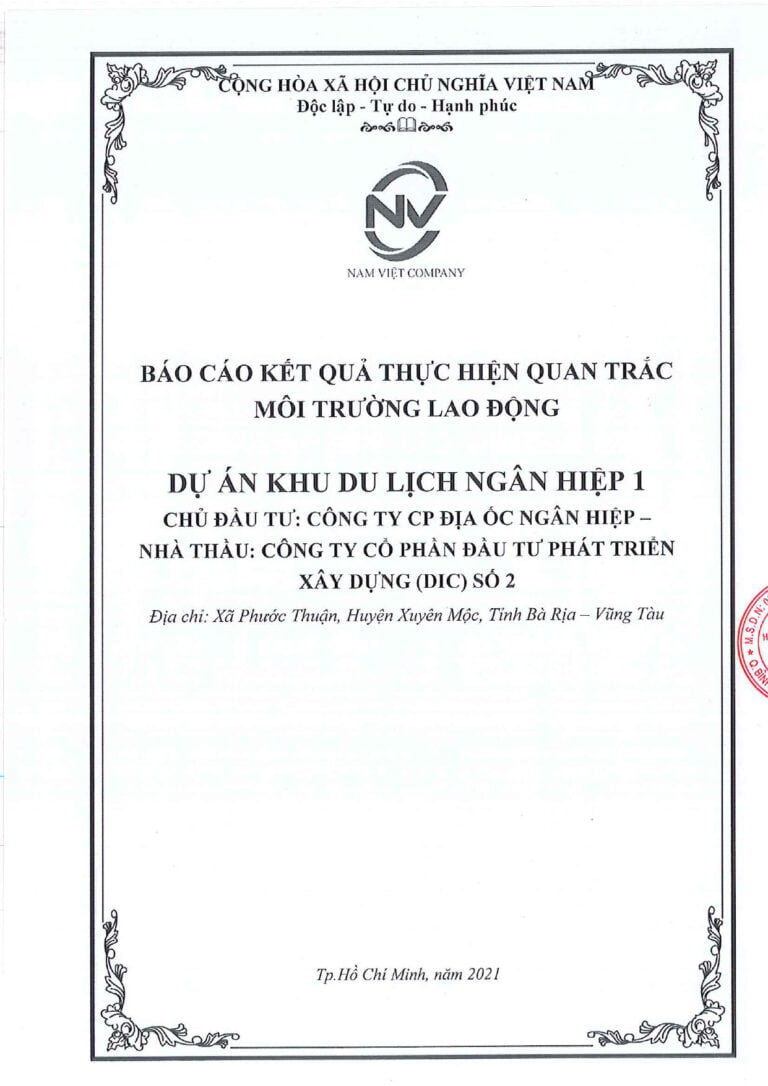
e. Frequency of workplace environmental monitoring according to law
According to Clause 2, Article 18 of the Law on Occupational Safety and Hygiene 84/2015/QH13, employers must organize workplace environmental monitoring to assess harmful factors at least once a year.
f. Deadline for submitting workplace environmental monitoring reports according to law
The deadline is before December 31 each year. Enterprises of production factories are required to submit workplace environmental monitoring reports to the Department of Health at the locality where the main office and workers are located.
If there are changes in technology, production processes, or upgrades of factories that may generate new hazardous factors affecting workers’ health, enterprises must update occupational hygiene records related to harmful factors and perform environmental monitoring.
g. Penalties for employers violating workplace environmental monitoring regulations
According to Article 27, Decree No. 12/2022/ND-CP dated January 17, 2022, on administrative penalties in labor, social insurance, and Vietnamese workers working abroad under contract:
- Clause 2: Fines from VND 2,000,000 to 5,000,000 for employers who fail to publicly announce monitoring results and hazard evaluations at the workplace immediately after receiving them.
- Clause 3: Fines from VND 20,000,000 to 40,000,000 for employers who do not conduct workplace environmental monitoring to control health hazards according to legal regulations.
- Clause 4: Fines from VND 40,000,000 to 60,000,000 for employers who cooperate with monitoring organizations to commit fraud in environmental monitoring activities but not to the extent of criminal liability.
3. Harmful environmental factors for workers in coal mining factories
Workers in coal mining factories face many harmful environmental factors. The following are some potential hazards that could affect their health:
- Coal dust: Coal mining generates coal dust, which contains compounds such as carbon, organic compounds, heavy metals, and other toxic substances. Inhaling coal dust can cause respiratory and lung problems, such as pneumoconiosis and pneumonia.
- Methane gas: Methane is a naturally occurring gas generated during coal mining. Methane is explosive, and if not carefully managed, it can pose dangers and cause injuries to workers.
- Toxic gases: Coal mining can release toxic gases such as nitrogen oxides, hydrogen sulfide (H2S), carbon monoxide (CO), and sulfur dioxide (SO2). These toxic gases can seriously affect the respiratory system, cardiovascular system, and nervous system.
- Heavy metal contamination: Coal mining can also release heavy metals such as mercury, lead, cadmium, and arsenic. Exposure to these metals can cause liver, kidney, nervous system, and general health problems.
- Noise: Machinery and equipment in coal mining factories generate high levels of noise that exceed safety limits. Continuous and intense noise exposure can damage hearing, cause stress, and affect overall health.
- Water pollution: Coal mining processes can contaminate water through discharges containing chemical compounds and other waste from production activities.
REGISTER FOR OCCUPATIONAL ENVIRONMENT MONITORING SERVICE
4. Measures to improve working conditions in coal mining factories
To improve working conditions in coal mining factories and protect worker health, the following measures can be applied:
- Safety management system: Establish and adhere to labor safety rules, procedures, and regulations. Ensure implementation of safety measures and monitor employee compliance.
- Training and education: Train workers on workplace hazards and injury prevention. Provide knowledge and skills needed for safe and effective work.
- Use of personal protective equipment (PPE): Ensure the provision and proper use of PPE such as helmets, safety goggles, masks, gloves, protective clothing, and safety boots to protect workers from potential hazards.
- Coal dust control: Implement measures to control coal dust, such as dust extraction systems, regular maintenance and cleaning of mining equipment, and providing well-ventilated work areas.
- Methane gas management: Establish monitoring and control systems to ensure safe methane levels in the factory. Use measures such as ventilation, gas exhaust systems, and safe work procedures in high-risk methane areas.
- Waste management: Ensure coal mining waste handling complies with environmental regulations and standards. Apply measures such as recycling, proper waste treatment, and minimizing negative environmental impacts.
- Noise control: Implement measures to reduce noise from machinery and equipment, including noise-reducing devices, sound isolation, and limiting exposure time to loud noise.
- Health assessment and monitoring: Conduct regular health check-ups for workers, monitor workplace-related health indicators, and provide appropriate medical care when necessary.
- Periodically conduct occupational environment monitoring in factories to collect and analyze harmful factors affecting workers, then adjust and reduce hazards to prevent occupational diseases.
5. Benefits of periodic monitoring in coal mining factories
An Toan Nam Viet provides businesses with valuable advantages when using occupational environment monitoring services in accordance with Decree 44/2016/ND-CP on managing and controlling harmful workplace factors affecting employees.
- Businesses can proactively control harmful factors in workshops or factories.
- Receive advice and recommendations on measures to reduce harmful factors and improve workplace environment quality.
- Indirectly protect human resources, a key factor in business development.
- Reduce the harmful effects of occupational diseases on health, minimizing future treatment costs.
- Enhance worker health, ensuring product quality and maintaining production output.
- Ensure compliance with labor safety laws and avoid legal risks.
- Enhance credibility and professionalism in all aspects, elevating the company’s brand.
Nam Viet’s environmental monitoring service is a solution to reduce occupational disease risks, contributing to a clean and high-quality working environment.

6. National occupational environment monitoring center
Occupational environment monitoring center of Nam Viet is a professional unit specializing in monitoring and measuring workplace environmental quality across all provinces in Vietnam. With a team of experienced monitoring specialists, the center uses modern measurement equipment to ensure accuracy and reliability.
Besides monitoring services, the center assists clients in planning, managing, and tracking occupational environmental issues. With the motto “customer-centered,” the center prioritizes client satisfaction, meets all client needs, and commits to providing the best solutions for businesses.
REGISTER FOR OCCUPATIONAL ENVIRONMENT MONITORING SERVICE
With investments in technology, equipment, and human resources, Nam Viet’s monitoring center has become one of the most reputable units in occupational environment monitoring in Ho Chi Minh City, with the following objectives:
- We always value our brand reputation and the quality of our service products.
- We provide clients with the best and most suitable solutions possible.
- With a team of experienced Masters and Engineers, committed to environmental protection and benefiting businesses.
- By choosing Nam Viet Environmental Monitoring, companies receive professional service from experts and the best cost advantages.
The occupational environment monitoring process at Nam Viet includes the following basic steps:
- Before monitoring, we ensure all equipment is calibrated according to legal regulations.
- Follow occupational environment monitoring procedures committed to the Department of Health accurately and fully.
- Report monitoring results honestly to employers.
- If monitoring results indicate unsafe conditions, Nam Viet provides corrective solutions, and the workplace implements the following:
- Implement measures to improve working conditions, minimize harmful factor impacts, and prevent occupational diseases.
- Conduct health examinations to detect occupational and related diseases early for workers in unsafe environments.
- Provide in-kind compensation to workers according to labor law.

7. Occupational environment monitoring quotation
To help businesses conduct professional and effective occupational environment monitoring, Nam Viet provides clients with a quotation for occupational environment monitoring services that is high-quality and reasonably priced.
- Our quotation provides detailed pricing information for the monitoring services we offer, including costs related to travel, measurement, analysis, and reporting. Clients can trust the accuracy and reliability of the monitoring reports we provide.
- We commit to offering competitive and reasonable prices in the market and are always ready to provide quick and professional advice for any inquiries regarding monitoring services.
- With Nam Viet’s monitoring quotation, clients can easily select service packages suitable to their needs. We are committed to delivering the highest satisfaction with professional service quality.
1 review for Occupational environment monitoring at the factory mining coal
No comments yet

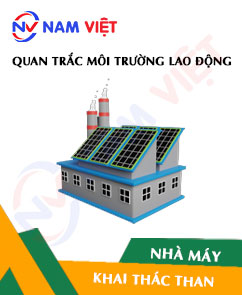
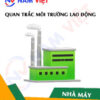

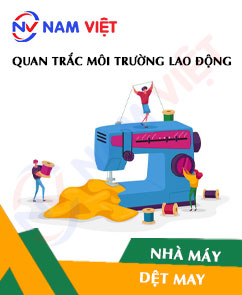
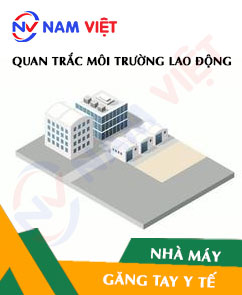
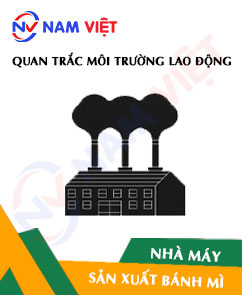
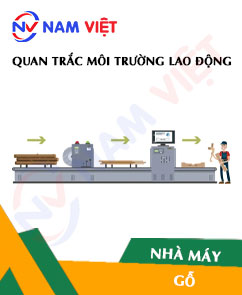

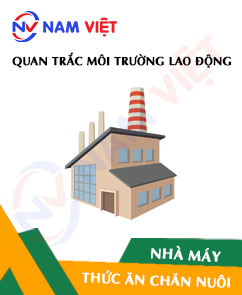


maituyet.cuong12
Professional labor environment monitoring unit